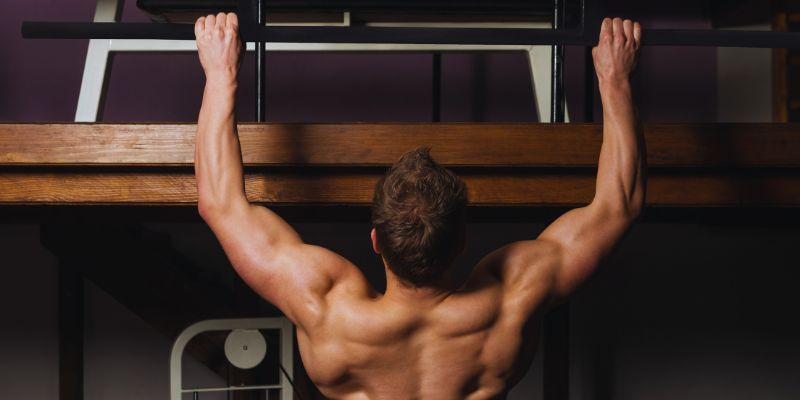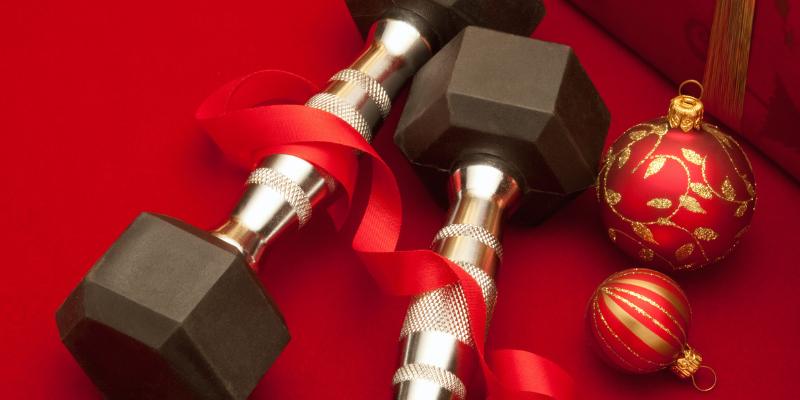6 Exercise Swaps for a More Effective Workout: Transform Your Routine Today
Do your workouts not improve? Maintaining the same pattern can slow down outcomes and raise injury risk. Little exercise swaps can increase endurance, strengthen certain muscles, and activate others. Try variations that push your body in fresh ways rather than repeating useless motions. These exercise substitutions improve stability, boost muscle, and assist in avoiding typical workout errors.
Whether you're a novice or an accomplished athlete, changing your program will improve your results. Every modification maximizes efficiency by targeting several muscle groups. A balanced exercise program increases general fitness and keeps you engaged. These six basic yet effective exercise swaps will help you improve your program.
1. Swap Crunches for Hanging Leg Raises
Though they largely work the upper abs, crunches are a common core workout. They also tax the lower back and neck. But hinging leg lifts target the core, particularly the hip flexors and lower abs. Grab an overhand grip pull-up bar to lift your hanging leg as you raise your legs, straighten your arms, and engage your core. Raise them to a 90-degree angle, then gently bring them down. For a simpler variant, start with bent knees if you are a novice. Advanced people can provide greater resistance by weighing between their feet.
For optimal effects, do three sets of 10–12 repetitions. This switch increases general stability, flexibility, and core strength. Though they are abused often, crunches do not stimulate the core. By demanding more control, hanging leg lifts offer a better challenge. Advance to the complete movement as you grow strong. Including this swap into your program will result in higher endurance, stronger abs, and enhanced athletic performance. Regular practice of this activity will allow you to define your core.
2. Replace Barbell Squats with Bulgarian Split Squats
Though they might strain the lower back, barbell squats are excellent for leg strength. Many also suffer from proper form, which strains their knees. The Bulgarian split squat offers a better substitute since it increases muscle involvement and balance. Set up this exercise by standing before a bench. Lower your back knee toward the ground while one foot rests behind you on the bench. Aligning your front knee with your toes will help. Push back up using your front heel, then repeat.
This action lowers spinal tension while working the quads, hamstrings, and glues. It also strengthens single-leg flexibility. While skilled lifters use dumbbells, beginners can start with body weight. Each leg should get three sets of eight to ten repetitions. This switch eliminates muscular imbalances and increases lower-body stability. Many folks find that strong barbell squats cause back trouble. Still working the lower body, the Bulgarian split squat reduces needless spinal pressure. It likewise increases flexibility and coordination.

3. Switch Bench Press for Dumbbell Press
Though it reduces movement range, the barbell bench press is great for chest growth. Using dumbbells stabilizes muscles and enhances flexibility. It allows better stretching and contraction, which helps muscles grow more effectively. Press a dumbbell on a bench with a dumbbell in each hand. Press the weights straight out from your wrists. Lower them gradually until your elbows angle ninety degrees. Keep control and push back upward.
By permitting natural motion patterns, dumbbells also help to lessen shoulder strain. This switch lowers the chance of imbalances and improves muscular symmetry. Start with moderate weight and do three sets of eight to twelve repetitions. This modification increases chest strength and stability over time. An often-occurring error with the barbell bench press is unequal muscular growth.
4. Replace Lat Pulldowns with Pull-Ups
While lat pulldowns aid back development, they activate fewer muscles than pull-ups. Targeting the lats, shoulders, and biceps, pull-ups increase grip strength. They improve upper-body endurance generally as well. To do a pull-up, grab a pull-up bar with your palms facing away. Pull till your chin crosses the bar. Back down under control to finish one repetition.
If you are a novice, help yourself with resistance bands. Advanced people might add a weighted vest. Do three sets of as many repetitions as you can. Pull-ups increase athletic performance and help build functional strength. This switch leads to stronger arms and improved back definition.

5. Swap Leg Press for Step-Ups
Though it doesn't train stabilizing muscles, the leg press machine increases leg strength. Still, step-ups help with coordination, balance, and functional strength. This practice is more helpful since it replaces actual motions as well. Standing in front of a strong bench or box, do a step-up. First, step on the ground and raise yourself by pushing through your heel. Control yourself down, then swap legs.
Holding dumbbells works muscles more effectively and increases difficulty. Reducing joint tension, step-ups target the quads, hamstrings, and glutes. Ten times per leg, do three sets. This exchange increases balance, strengthens the lower body, and encourages improved athletic performance.
6. Replace Tricep Dips with Close-Grip Push-Ups
It targets the arms, and tricep dips can strain the shoulders. Close-grip push-ups are a safer variation that strengthens the triceps, chest, and core. They increase upper-body endurance and help to lower joint stress as well. Start this movement with your hands close together on the floor. As you lower yourself, keep your elbows tucked; then, straightly push back. If this seems simple, raise your feet or use a weighted vest for more challenge.
Since close-grip push-ups work more muscles than dips, they are a better option for general strength. To optimize increases, do three sets of twelve to fifteen repetitions. This change keeps your workouts safe and efficient while helping to shape your arms. It's a great approach to improve power without running the danger of shoulder problems.
Conclusion
Changing your exercise doesn't call for extreme modification. Little, calculated changes in muscle activation, endurance, and general performance can greatly increase. These other workouts lower injury chances and work more muscles. These substitutions yield superior results regardless of your goals—better core strength, stronger legs, or more upper-body power. They also provide a more energetic and demanding nature for exercise. Including these modifications guarantees consistent development and maintains the effectiveness of your training program. Let poor exercise stop your advancement. Try these swaps right now to get more effective, intelligent training.












